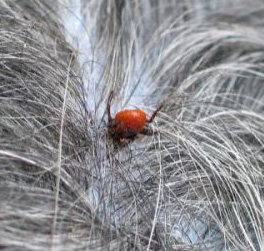 It’s time to revisit my least favorite topic—ticks. Blech! While we don’t have a really bad problem with them in the Pacific Northwest, they pose a real danger in other parts of the country. This previous post is packed with information and presents a novel way of removing them from your pets—complete with video.
It’s time to revisit my least favorite topic—ticks. Blech! While we don’t have a really bad problem with them in the Pacific Northwest, they pose a real danger in other parts of the country. This previous post is packed with information and presents a novel way of removing them from your pets—complete with video.
Parasites are not my favorite topic. In fact they really give me the creeps, but ticks are an important topic and their removal can be tricky. Using tweezers risks breaking off the body of the tick and leaving its head under the skin.(Ugh!) This can lead to infection and scarring. Applying a noxious substance to the tick can be bad if your pet licks it clean or it can lead to the tick depositing more of its disease-carrying saliva in the wound.(Bleh!) Using a match may cause the same thing to happen and just doesn’t seem wise to do on a furry animal.
Despite the “ick-factor” for me, I found good instructions for a safe way to remove the entire tick on the site Instructables.com. There is even a video demonstrating the technique which only requires using your finger to get the tick to crawl out almost immediately.(Gah!) This technique seems especially good for pets that don’t want to hold still. I highly recommend using latex gloves to do this to limit your exposure to the diseases ticks can carry. Don’t squish them between your fingers for the same reason. Instead, put them in a jar filled with rubbing alcohol. Don’t just flush them down the toilet–this won’t kill them. Once you remove the tick, be sure to clean the wound with antiseptic.
Ticks are serious business when it comes to cats, dogs, rabbits, and other companion animals—not to mention the risk to humans. The mere presence of ticks on your pet can cause tick paralysis in your animals.
Ticks carry a number of diseases including:
Prevention is your first defense. We use Frontline Plus on our dog during flea season, so we haven’t ever needed to remove a tick from her.(Yea!) I definitely recommend using a product like Frontline Plus, Revolution for Dogs, or K9 Advantix. (Frontline Plus is the only topical treatment of the three that kills ticks and is safe to use on cats.) Always check with your vet before administering medication to your pets. It isn’t always possible to use one of these topical treatments on animals with tick infestations, especially in weakened, underweight, and/or anemic animals which happens sometimes with neglected and stray animals. The technique above would be very usefull in those instances.



